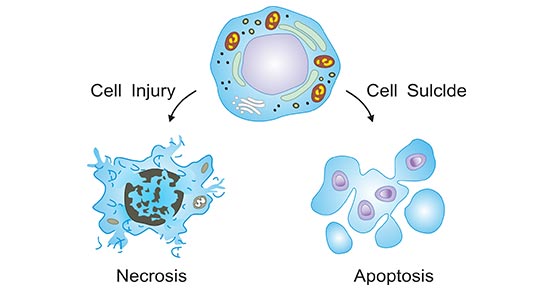A patient asks a nurse why a friend who is taking the same drug responds differently to that drug. The nurse knows that the most common variation in drug response is due to differences in each patient’s:
Psychosocial response
Drug receptor sites
Metabolism of drugs
Hypersensitivity potential
The Correct Answer is C
Choice A Reason:
Psychosocial factors, such as stress, beliefs, and expectations, can influence drug response to some extent. However, they are not the primary reason for the most common variations in drug response. These factors might affect how a patient perceives the effectiveness of a drug, but they do not significantly alter the pharmacokinetics or pharmacodynamics of the drug itself.
Choice B Reason:
Drug receptor sites can vary between individuals, affecting how well a drug binds and exerts its effect. While this can contribute to differences in drug response, it is not the most common cause. Variations in receptor sites are often due to genetic differences, which can influence the efficacy and potency of a drug.
Choice C Reason:
This is the correct answer. The metabolism of drugs is the most common cause of variation in drug response among individuals. Differences in metabolic rates can be attributed to genetic factors, age, liver function, and the presence of other medications. These factors affect how quickly a drug is broken down and eliminated from the body, leading to variations in drug levels and responses.
Choice D Reason:
Hypersensitivity potential refers to the likelihood of an individual having an allergic reaction to a drug. While this can cause significant differences in drug response, it is not the most common reason for variations. Hypersensitivity reactions are relatively rare compared to metabolic differences.
Nursing Test Bank
Naxlex Comprehensive Predictor Exams
Related Questions
Correct Answer is B
Explanation
Choice A Reason:
Bronchoconstriction is the narrowing of the airways in the lungs due to the tightening of surrounding smooth muscle. This response is typically associated with conditions like asthma and is not a common reaction to acute stress. During stress, the sympathetic nervous system actually causes bronchodilation to increase airflow and oxygen delivery to the muscles.
Choice B Reason:
This is the correct answer. Increased glucose production is a typical response to acute stress. The body releases stress hormones like adrenaline and cortisol, which stimulate the liver to produce more glucose. This process, known as glycogenolysis, ensures that the body has enough energy to handle the stressor. This response is part of the “fight-or-flight” mechanism, preparing the body for immediate physical activity.
Choice C Reason:
Decreased cortisol release is not expected during acute stress. In fact, cortisol levels typically increase as part of the body’s stress response. Cortisol helps to mobilize energy stores, suppress inflammation, and support cardiovascular function. Therefore, this choice is incorrect.
Choice D Reason:
Bradycardia, or a slower than normal heart rate, is not a typical response to acute stress. Instead, the sympathetic nervous system increases heart rate (tachycardia) to ensure that more blood is pumped to vital organs and muscles. This helps the body to respond more effectively to the stressor.
Correct Answer is D
Explanation
Choice A: Atrophy
Atrophy refers to the reduction in size or wasting away of an organ or tissue due to a decrease in cell size or number. This can occur due to various reasons such as disuse, lack of nutrition, or loss of nerve supply. While atrophy involves the shrinkage of cells, it does not directly result in cellular death. Instead, it is a form of cellular adaptation to adverse conditions.
Choice B: Proliferation
Proliferation is the process by which cells grow and divide to produce more cells. This process is essential for growth, development, and tissue repair. Proliferation leads to an increase in the number of cells and is the opposite of cellular death. It is a tightly regulated process that ensures the maintenance and regeneration of tissues.
Choice C: Mutation
Mutation refers to changes in the DNA sequence of a cell. These changes can occur due to errors during DNA replication, exposure to radiation, or chemical mutagens. While mutations can lead to various outcomes, including cancer, they do not directly cause cellular death. Instead, mutations can alter the function of genes and proteins, potentially leading to uncontrolled cell growth or other cellular dysfunctions.
Choice D: Death
Apoptosis is a form of programmed cell death that occurs in multicellular organisms. It is a highly regulated process that allows the body to remove damaged or unnecessary cells without causing harm to surrounding tissues. Apoptosis involves a series of biochemical events leading to characteristic cell changes and eventual death. This process is crucial for maintaining cellular homeostasis and preventing the development of diseases such as cancer.

Whether you are a student looking to ace your exams or a practicing nurse seeking to enhance your expertise , our nursing education contents will empower you with the confidence and competence to make a difference in the lives of patients and become a respected leader in the healthcare field.
Visit Naxlex, invest in your future and unlock endless possibilities with our unparalleled nursing education contents today
Report Wrong Answer on the Current Question
Do you disagree with the answer? If yes, what is your expected answer? Explain.
Kindly be descriptive with the issue you are facing.
